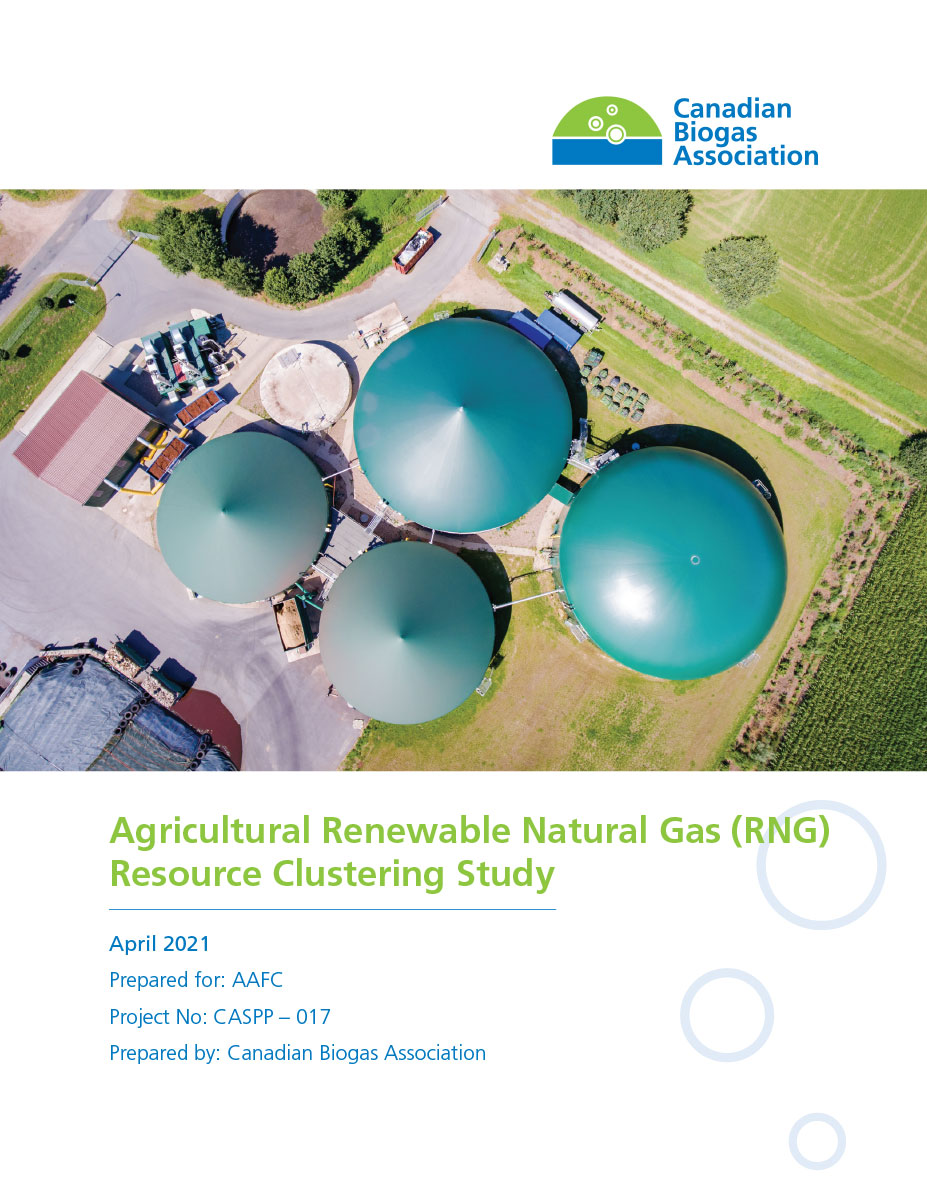Informative Article Agricultural RNG Resource Clustering Study
 The development of anaerobic digestion (AD) systems in the livestock production sector are a key strategy to reduce agricultural GHG emissions, increase renewable energy production, and improve manure management to recapture nutrients and water. However, many farms have a limited size that does not produce enough feedstock to support a stand-alone AD facility. There is also uncertainty about whether biogas resources are close enough to infrastructure like natural gas pipes to get their product to market. The adoption of clusters with multiple farms contributing feedstock to a centralized AD facility is a potential model to overcome the scale-related economic barriers that project developers have encountered in the dairy livestock sector across Canada.
The development of anaerobic digestion (AD) systems in the livestock production sector are a key strategy to reduce agricultural GHG emissions, increase renewable energy production, and improve manure management to recapture nutrients and water. However, many farms have a limited size that does not produce enough feedstock to support a stand-alone AD facility. There is also uncertainty about whether biogas resources are close enough to infrastructure like natural gas pipes to get their product to market. The adoption of clusters with multiple farms contributing feedstock to a centralized AD facility is a potential model to overcome the scale-related economic barriers that project developers have encountered in the dairy livestock sector across Canada.
 The Agricultural Renewable Natural Gas (RNG) Resource Clustering Study provides farmers, developers, and policy makers an understanding of how changing key factors impact deployment of economically viable agricultural RNG clusters. The study summarizes the findings from nine output scenarios run on the Agricultural RNG Resource Clustering Tool that estimates RNG production potential under different conditions such as variable RNG price, manure and off-farm feedstock ratio, and pipeline costs using livestock barn and natural gas pipeline data from Ontario.
The Agricultural Renewable Natural Gas (RNG) Resource Clustering Study provides farmers, developers, and policy makers an understanding of how changing key factors impact deployment of economically viable agricultural RNG clusters. The study summarizes the findings from nine output scenarios run on the Agricultural RNG Resource Clustering Tool that estimates RNG production potential under different conditions such as variable RNG price, manure and off-farm feedstock ratio, and pipeline costs using livestock barn and natural gas pipeline data from Ontario.
Agricultural RNG projects have the potential to make a large contribution to RNG generation and greening the natural gas grid. The study results highlight the importance of economic sustainability in promoting cluster development and identify how this tool can be used to evaluate the key factors affecting cluster profitability. This is useful information to farmers, developers, and policy makers who are considering how to accelerate agricultural RNG project development. The Agricultural RNG Resource Clustering Tool indicated that with the appropriate RNG price, availability of feedstock and close proximity to pipelines, agricultural RNG projects with cluster of up to four farms can result in a positive cash flow and become economic drivers in rural areas. The outcomes for society can be that farm-based RNG can contribute substantial quantities or RNG, consume large volumes of food based feedstock, treat large volumes of manure, and deliver low carbon fuel through that natural gas network.